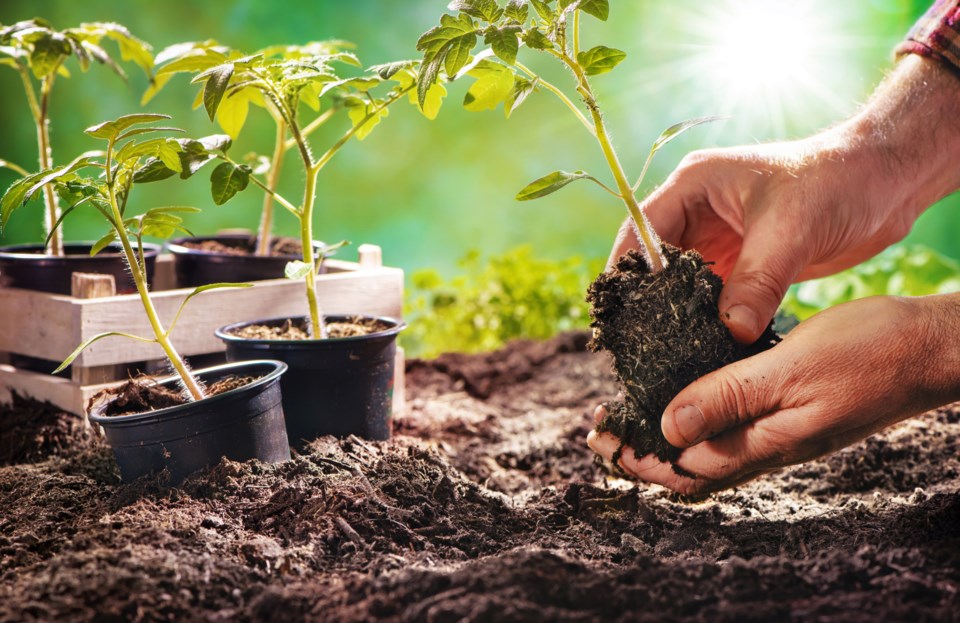Just when many people decided to spend more time gardening because of the pandemic, the weather decided to throw some challenges at those plans.
First, we had a cool, wet start. The continuous wet weather affected plants in a number of ways. Perennials and certain garden vegetables grew taller than usual, but the roots of plants need air as well as water. Soil has air pockets between the particles of clay, sand and organic matter that form the different textures of soil, depending on the proportion of each constituent. When the ground is saturated, plants respond by growing more roots near the surface of the soil to access the pockets of air. This can lead to problems when hot, dry weather follows. In spite of the wet spring, the recent hot windy weather has led to drought stress in some plants which could not adjust rapidly enough with deeper roots.
The frequent rain also affected pollination of flowering plants, particularly fruit and berry plants. If the flowering time of plants coincided with a prolonged period of rain, very few pollinating insects were on the job. The earlier blooms on my apple were pollinated, while the later, higher blooms were not. My cherries had poor pollination. The earlier blooming haskaps and saskatoons were pollinated. It looks like our wild blueberries and raspberries also had lots of busy insects doing their job.
The rain and cloudy, cool weather kept germination and growth of vegetables delayed, depending on when they were seeded, but once the warm weather arrived they took off. Hot season vegetables, in particular, are doing well. Tomatoes, peppers, cucumbers, zucchini, pumpkins and other squash, as well as beans, are producing well for most gardeners. Cool season crops such as peas, lettuce, broccoli, cauliflower, cabbage and kale have slowed down in the heat. They will grow faster again in the cooler late summer and fall weather.
Besides the weather challenges, garden pests were and still are plentiful. This spring, we had a population explosion of flea beetles. These tiny, black jumping beetles attack all members of the cabbage family: cabbage, cauliflower, broccoli, kale, kohlrabi, radish and other members of the family. Emerging seedlings are destroyed in hours. Young plants are killed or severely damaged. Older plants are riddled with a multitude of tiny holes, giving the leaves a shotgun appearance.
Then, there are the slugs. They love wet weather and happily multiply. They munch on many garden plants, both ornamentals and vegetables. There is no lack of grasshoppers, caterpillars and other insects to inflict some damage. Even spittlebugs were more numerous than usual.
There are strategies to address weather-related and insect challenges, which will be discussed in the next article.




